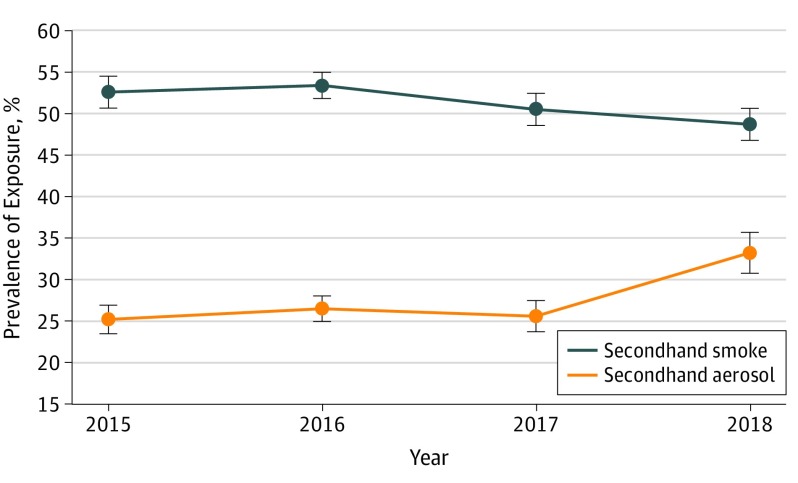Figure. Trends in Prevalence of Secondhand Aerosol Exposure and Secondhand Smoke Exposure Among 76 447 National Youth Tobacco Survey Respondents From 2015 to 2018.
Weighted estimates and 95% CIs were reported by taking the complex survey design (sampling weight, stratum, and cluster) into account using Taylor series variance estimation. Multivariable logistic regressions were performed to assess the temporal trend of exposure to secondhand aerosol and secondhand smoke, where age, sex, and race/ethnicity were covariates. Exposure to secondhand aerosol was assessed with the question, “During the past 30 days, on how many days did you breathe the aerosol from someone who was using an electronic cigarette in an indoor or outdoor public place?” with response options of 0 days, 1 to 2 days, 3 to 5 days, 5 to 9 days, 10 to 19 days, 20 to 29 days, and all 30 days. Respondents who reported 1 day or more of exposure were categorized as having secondhand aerosol exposure. Exposure to secondhand smoke was assessed with the question, “During the past 30 days, on how many days did you breathe the smoke from someone who was smoking tobacco products in an indoor or outdoor public place?” with the same response options as secondhand aerosol exposure. Respondents who reported 1 day or more were categorized as having secondhand smoke exposure. The prevalence of exposure to secondhand smoke in 2015 was 52.6%; in 2016, 53.4%; in 2017, 50.5%; and in 2018, 48.7%. The prevalence of exposure to secondhand aerosol in 2015 was 25.2%; in 2016, 26.5%; in 2017, 25.6%; and in 2018, 33.2%.

